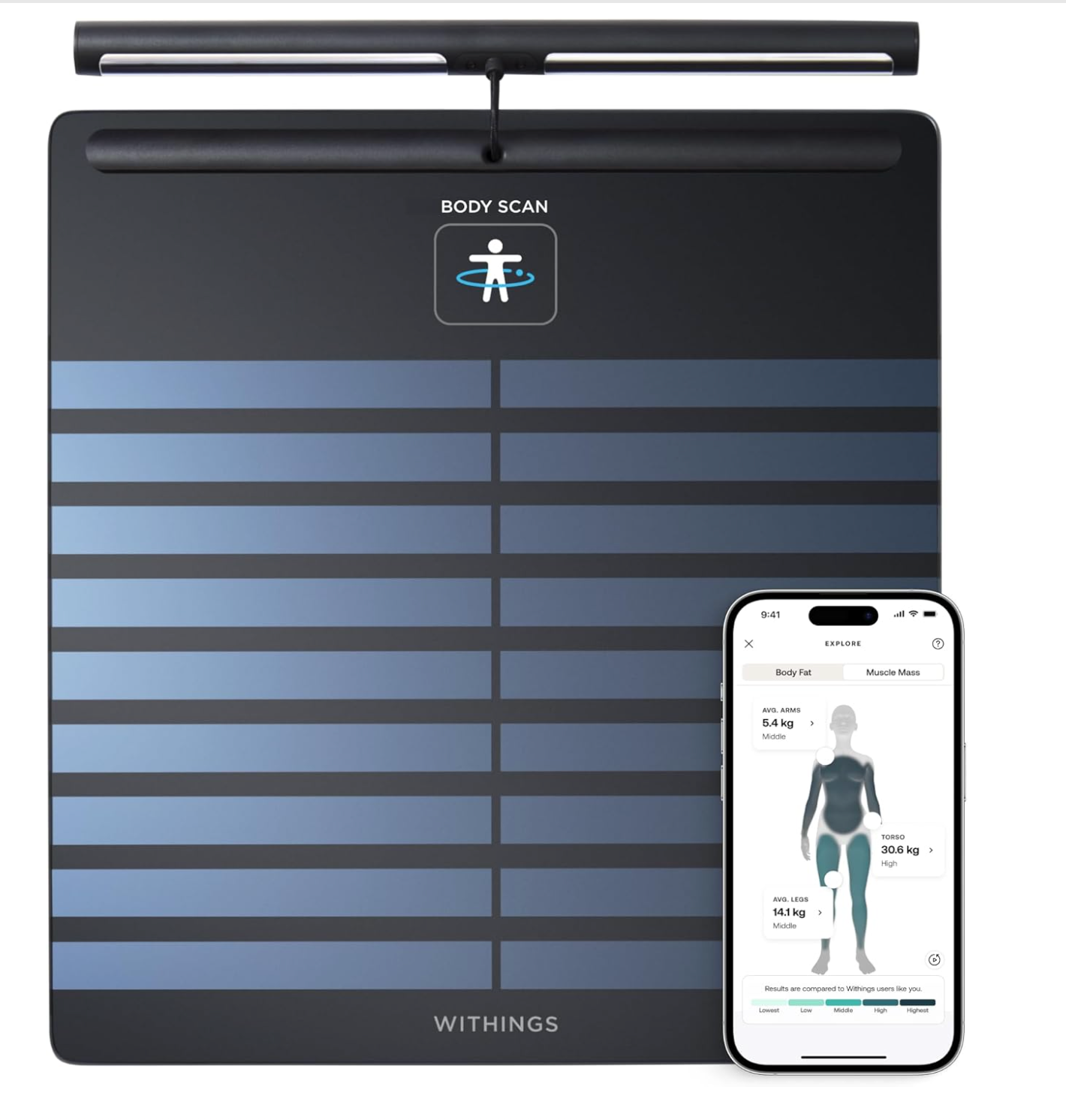Beyond Pounds Lost: 12 Metrics to Track for Weight Loss Success

Stop obsessing over that number of pounds lost and start tracking what actually matters for lasting results
Hey there, fellow weight loss warrior!
Can we talk honestly for a minute? How many times have you stepped on that bathroom scale, held your breath, and felt your heart sink when the number didn't budge—or worse, went up—despite eating salads for three days straight?
I've been there. We've all been there. That moment when you question everything: "Am I doing this wrong? Is my scale broken? Should I just give up and eat that leftover pizza?"
Here's the truth bomb nobody talks about: Your scale is lying to you.
Well, not exactly lying, but it's only telling you part of the story. And frankly, it's the least interesting part.
Why That Scale Number Is Messing With Your Head
Picture this: You've been crushing it at the gym for two weeks. You're lifting weights, eating protein, drinking water, feeling stronger. You step on the scale and... it's the same number. Or maybe it's even higher.
Sound familiar?
Here's what's really happening: You might be losing fat while gaining muscle. Since muscle weighs more than fat (it's denser), the scale doesn't capture this incredible transformation happening in your body. It's like judging a book by looking at just the spine—you're missing the whole story.
Traditional scales measure one thing: gravity's pull on your total body mass. They can't tell the difference between:
- Water weight (which fluctuates daily)
- Muscle tissue (the good stuff you want to keep)
- Fat tissue (what you're trying to lose)
- That big dinner you had last night
This is why you can feel amazing, look better in the mirror, and have your jeans fitting looser, but still feel defeated by a number that hasn't changed.
Enter Your New Best Friend: The Smart Scale
Smart scales are like having a personal body composition analyst in your bathroom. Instead of just telling you how much you weigh, they break down what you're made of. Think of it as getting a detailed report card for your body instead of just a pass/fail grade.
These clever devices use something called Bioelectrical Impedance Analysis (BIA). Don't worry—it's not as scary as it sounds. When you step on barefoot, the scale sends a tiny, completely safe electrical current through your body. Different tissues—fat, muscle, water, bone—resist this current differently, and the scale uses these resistance patterns to estimate your body composition.
Is it as precise as expensive medical scans? No. But is it incredibly useful for tracking your personal trends and keeping you motivated? Absolutely.
We recommend two different digital scales - one at a lower price point and one at a higher price point with more features. https://glp1tribe.com/store
The 12 Metrics That Actually Matter for Weight Loss
Let's dive into the numbers that will revolutionize how you think about your progress. I'm going to break these down in plain English, so you know exactly what to celebrate and what to keep working on.
1. Body Fat Percentage (The Real MVP)
This is the star of the show. Body fat percentage tells you what proportion of your weight is actually fat tissue.
Why you should care: This number can go down even when the scale stays the same. As you lose fat and gain muscle, you're literally reshaping your body composition.
What to aim for:
- Women: 21-33% (varies by age)
- Men: 8-20% (varies by age)
When this number drops, do a happy dance. This is real progress, regardless of what the scale says.
2. Muscle Mass (Your Metabolism's Best Friend)
This tells you how many pounds of muscle you're carrying. Muscle is your metabolic powerhouse—it burns calories even while you're binge-watching Netflix.
Why it matters: Every pound of muscle burns about 6-7 calories per day just existing, while fat burns about 2-3 calories. More muscle = higher metabolism = easier weight maintenance.
The goal: Maintain or increase this number during weight loss. If it's going up while body fat goes down, you're winning at weight loss.
3. Visceral Fat (The Silent Troublemaker)
This is the dangerous fat wrapped around your internal organs. You can't see it or pinch it, but it's there, and it's not invited to the party.
Why you need to track it: High visceral fat increases your risk of heart disease, diabetes, and other health issues. Even people who look slim can have high visceral fat levels.
The target: Keep it in the "normal" range (typically 1-9 on most scales). This is one number you definitely want to see go down.
4. Body Water Percentage (The Hydration Station)
Your body is roughly 50-70% water, and this percentage affects all your other readings.
The connection: Being dehydrated can make your body fat percentage appear higher than it is, while being over-hydrated can make it appear lower. Consistency in hydration leads to more reliable readings across all metrics.
What's normal: Around 45-65% for most adults, varying by age and gender.
5. Basal Metabolic Rate (BMR) (Your Daily Calorie Burn)
This is how many calories your body burns just keeping you alive—breathing, circulating blood, basic cellular functions.
Why it's crucial for weight loss: Your BMR is the foundation for calculating how many calories you can eat while still losing weight. Higher muscle mass = higher BMR = more calories you can consume.
The sweet spot: You want this number to stay stable or increase as you lose weight. If it drops significantly, it might mean you're losing muscle along with fat.
6. Metabolic Age (Your Body's Real Age)
This compares your metabolism to the average person your age. If your metabolic age is lower than your actual age, your body is functioning like a younger person's. Pretty cool, right?
The goal: Get this number lower than your actual age through strength training and building muscle mass.
7. BMI (Take It With a Grain of Salt)
Body Mass Index is still useful as a general guideline, but it has major limitations—especially if you're building muscle.
The reality check: A muscular person might have a "high" BMI but be incredibly healthy. Use this as one data point among many, not the ultimate judge of your health.
The Metrics You Don't Need to Stress About (But Are Nice to Know)
8. Skeletal Muscle Percentage
This is specifically the voluntary muscles you can build through exercise. Think of it as a subset of your total muscle mass.
9. Subcutaneous Fat Percentage
This is the "pinchable" fat under your skin. It's not as dangerous as visceral fat, but you'll likely see this decrease as you lose weight.
10. Protein Percentage
Some scales estimate this, but it's not as reliable as the other metrics. Focus more on eating adequate protein (about 0.8-1g per pound of body weight).
11. Bone Mass
This changes very slowly over time. It's good to track for long-term health, but don't expect dramatic changes.
12. Fat-Free Body Weight (Lean Body Mass)
This is everything that's not fat—muscle, bone, organs, water. You want this to stay stable or increase during weight loss.

How to Use These Numbers Like a Pro
The Golden Rules of Smart Scale Success
1. Consistency is Everything Weigh yourself at the same time each day (preferably morning, after using the bathroom, before eating). Your body weight can fluctuate 2-4 pounds throughout the day just from food and water.
2. Focus on Trends, Not Daily Numbers Look at weekly or monthly trends, not daily fluctuations. Your body is not a math equation—it's a complex biological system with natural variations.
3. Hydration Matters Drink consistent amounts of water and try to measure under similar hydration conditions. Being dehydrated can throw off all your readings.
4. Set Composition Goals, Not Just Weight Goals Instead of "I want to lose 20 pounds," try "I want to lose 5% body fat while maintaining my muscle mass." This keeps you focused on health, not just the scale.
What Real Progress Looks Like
Here's what successful body composition change might look like over 3 months:
Starting point:
- Total weight: 180 lbs
- Body fat: 35%
- Muscle mass: 95 lbs
- BMR: 1,400 calories
After 3 months:
- Total weight: 175 lbs (only 5 lbs down!)
- Body fat: 28% (7% decrease - huge win!)
- Muscle mass: 98 lbs (gained 3 lbs of muscle)
- BMR: 1,450 calories (metabolism improved)
See how the scale barely moved, but the body completely transformed? This is why smart scales are game-changers.
Making It All Work in Real Life
Week 1-2: Baseline and Learning
Just get used to the routine. Step on your scale daily, same time, same conditions. Don't make any major changes yet—just observe and learn your numbers.
Week 3-4: Spot the Patterns
Start noticing how different factors affect your readings. Did a high-sodium meal spike your weight? Did a great workout improve your muscle mass reading?
Month 2-3: Adjust and Optimize
Now you can start making informed adjustments. If your body fat isn't budging, maybe add more strength training. If your muscle mass is dropping, increase your protein intake.
Beyond 3 Months: Master Mode
You'll start to understand your body's unique patterns. You'll know that your weight always goes up after certain meals, or that your best readings come after consistent sleep.
The Bottom Line: Reframe Your Success
Smart scales aren't about giving you more numbers to obsess over—they're about giving you a more complete, encouraging picture of your progress.
Instead of stepping on the scale and thinking "Ugh, I only lost half a pound," you might think "Amazing! I lost 2% body fat and gained muscle this month. My metabolism is improving!"
The number on the scale will always be just one data point. But when you understand what's really happening inside your body, every small improvement becomes a victory worth celebrating.
Remember: Weight loss isn't about becoming smaller—it's about becoming stronger, healthier, and more confident in your body. Smart scales help you see that transformation even when the regular scale tries to tell you nothing's happening.
Your body is doing incredible things every day. Now you finally have the tools to see it, track it, and celebrate it properly.
We recommend two different digital scales - one at a lower price point and one at a higher price point with more features. https://glp1tribe.com/store
Here's to your success—all of it, not just the number on the scale!
Ready to upgrade your weight loss journey? Consider investing in a smart scale and start tracking the metrics that actually matter. Your future self will thank you for focusing on health and composition, not just weight.
We recommend two different digital scales - one at a lower price point and one at a higher price point with more features. https://glp1tribe.com/store

